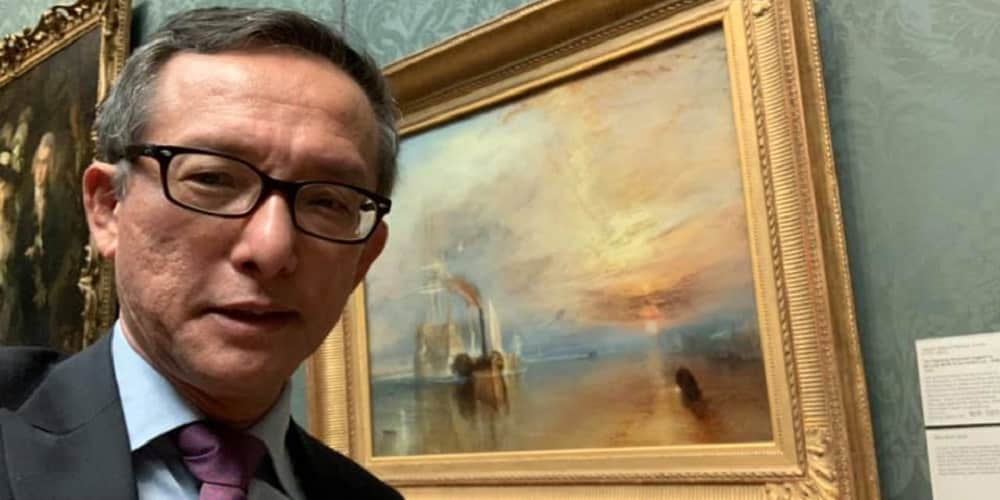With the recent conversation around protests and dissent in Singapore, prominent legal academic and former Nominated Member of Parliament (NMP) Associate Professor Simon Tay took to Facebook to share his thoughts on opposing government policy.
The current head of the independent think tank Singapore Institute of International Affairs noted that the recent talk about protests and the young in Singapore has several threads. The first is about professors and the scope they have to teach controversial issues; second, about the artistic freedom to criticize; and third, about youth and dissent.
To illustrate his thoughts, Mr Tay wrote a post on Facebook titled “Reflecting on Dissent, Protects and the Young in Singapore”. In it, he wrote about his experience as a young man in the Students Union (SU) of the National University of Singapore (NUS) when the Graduate Mother Scheme was first introduced 35 years ago.
Mr Tay said the scheme was “controversial, not least because the idea smacked of eugenics”.
He explained that he was President of the Students Union at NUS back then, and was one of those who felt that the scheme was wrong. After consulting with the SU council, chaired by now-Minister of Foreign Affairs Vivian Balakrishnan, and many others, the SU decided to make their views known that the policy would not be effective in getting graduate mothers to have more kids.
Discussing methods of expressing their opposing views, Mr Tay noted, “This was before social media, the internet, and the Speakers’ Corner. There were few (if any) NGOs and civil society groups. The newspapers were subject to control. The government was still led by Lee Kuan Yew and the then Minister of Education was Dr Goh Keng Swee. Prior to this, in the 1970s, some student union leaders had been put on trial and jailed.”
Despite that, Mr Tay said he felt a duty to speak up. And so, talks and discussions were held on campus and the SU issued press releases and held media conferences to make their views known.
“We organized a petition so that thousands could sign off on the Union’s stance (complete with NRIC numbers). The students were energized. There were crowds for on-campus gatherings and T-shirts with slogans,” he wrote.
Mr Tay said some parties responded well. The press at the time ran the stories prominently and “didn’t bury us in official rebuttals” while then junior Education Minister Dr Tay Eng Soon agreed to meet them to receive their petitions and discuss their concerns.
Others were less supportive. “One Minister privately threatened to throw a number of us out of the University,” recalled Mr Tay.
“We invited Dr Toh Chin Chye to campus to speak but the university forbade us from using campus facilities to host the once PAP chairman who was by then a dissenting back-bencher.”
Mr Tay emphasised that a key decision in the SU campaign back then was to not march in protest with placards.
“We estimated that it would trigger memories of past turbulence and provoke a strong reaction,” he explained.
“We continued making our points and presenting our petition, in person and in the media. This was already going beyond where most would go.”
For a while, the government rebutted the students and went ahead with the policy. But soon, the measures were discontinued. Mr Tay said the 12.9% drop in PAP’s votes in the 1984 general election can be attributed, in part, to this controversy.
However, when the government did roll the scheme back, there was no acknowledgement of the backlash from the SU or the part the students played in opposing the policy.
“Today, when I googled this, I could find nothing that acknowledged the role of the student voices,” said Mr Tay.
“What does this mean for the current discussion of dissent?” he asked.
Talking about Singapore today, Mr Tay says the county has wider parameters and avenues now for people to make their views known and organise themselves to reach out to others in the community.
He asserted, “Know what you believe and be prepared to speak and act on your beliefs, even if you differ and dissent.”
He did also note that dissent requires responsibility.
“In dissent, act with responsibility. A responsibility to your beliefs but also to respect contending views. A responsibility not only to the current hot issues but also to future efforts, so pathways can be further open to participation. The responsibility not only to the stability of our society but to its progress and values. “
Mr Tay concluded by saying that while rights do not mean that you are free to do anything and anything, responsibilities are not an excuse to do nothing.
The few comments on Mr Tay’s posts ranged from those who were surprised to learn something new about Singapore history…

…to those who were in agreement that dissent requires responsibility.



Subscribe
Login
0 Comments





